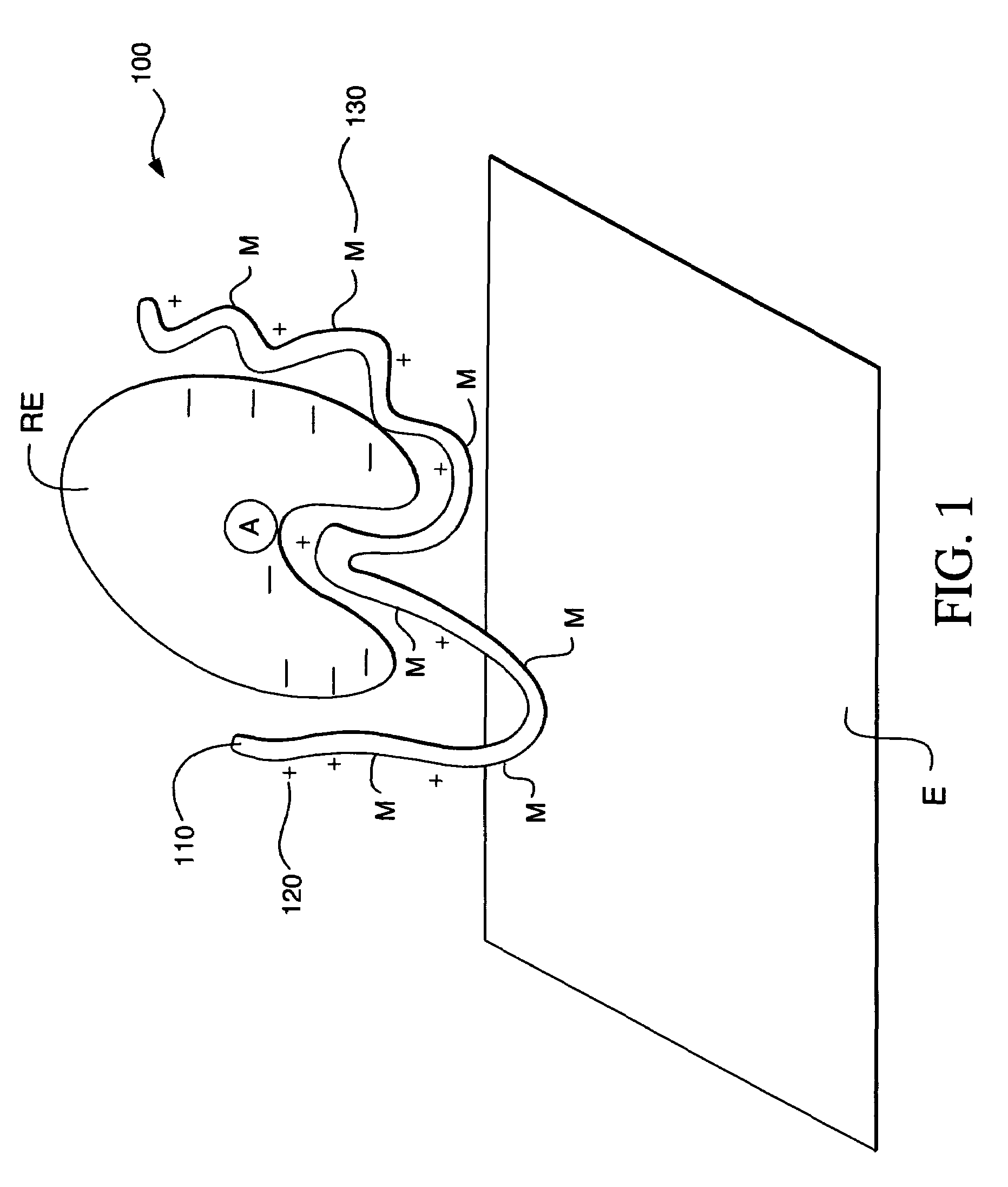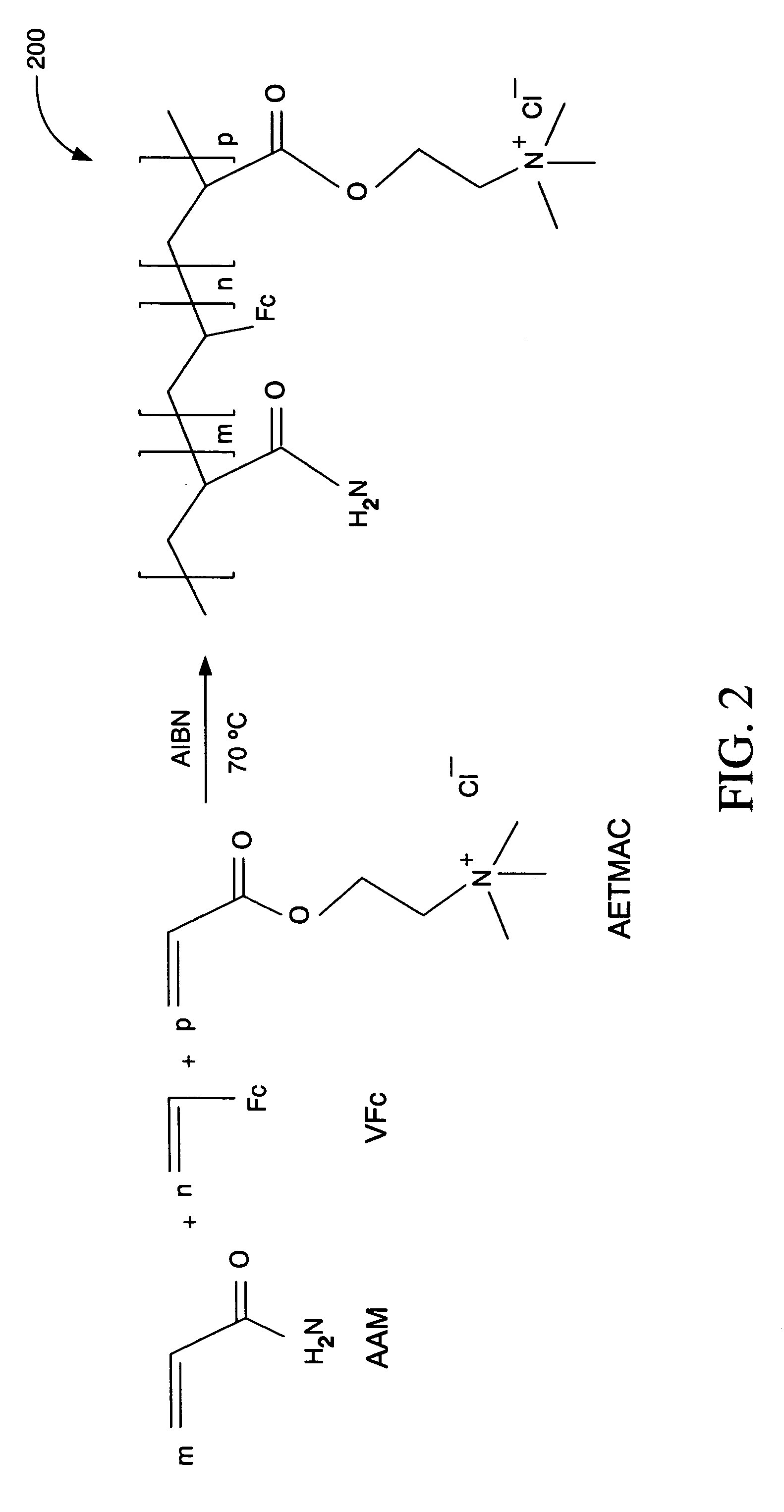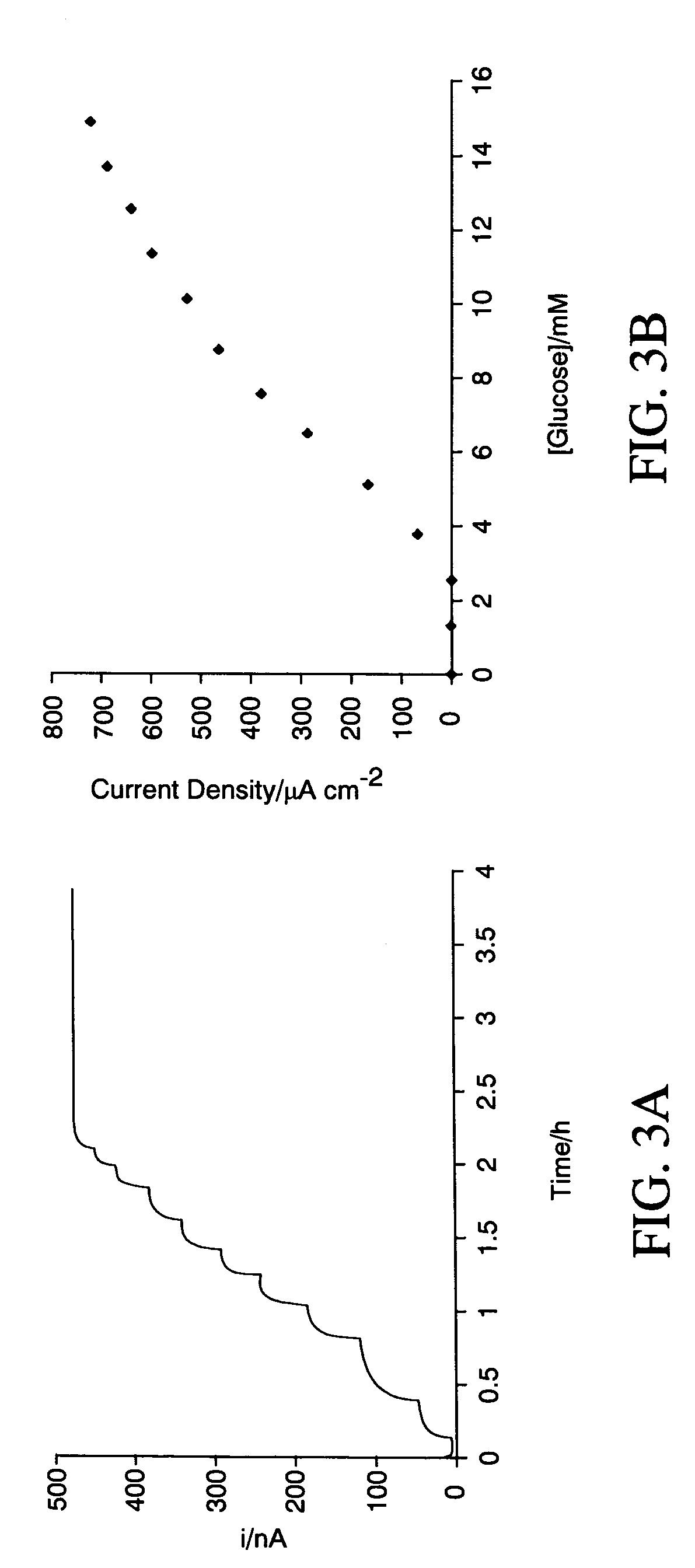Ionic hydrophilic high molecular weight redox polymers for use in enzymatic electrochemical-based sensors
a technology of ionic hydrophilic and high molecular weight, applied in the field of sensors, can solve the problems of undesirable leaching of redox mediators into human or other subjects' bodies, redox enzymes of such chemical compositions can suffer from a deleterious decrease in enzyme activity, and achieve the effect of adequate activity of redox mediators
- Summary
- Abstract
- Description
- Claims
- Application Information
AI Technical Summary
Benefits of technology
Problems solved by technology
Method used
Image
Examples
example 1
Synthesis of an Ionic Hydrophilic High Molecular Weight Redox Polymer
[0042]Ionic hydrophilic high molecular weight redox polymer 200 of FIG. 2 was synthesized by a free radical co-polymerization using a reaction solution of 1.8 g of acrylamide (AAM), 0.7 g of 80% [2-(acryloyloxy)ethyl]trimethyl ammonium chloride (AETMAC), 0.3 g of vinylferrocene (VFc), and 0.03 g of 2,2′-azobisisobutyronitrile (AIBN) in a 40 mL mixture of dioxane and ethanol (1 / 1 v / v). The reaction was performed in a round bottom flask.
[0043]Before initiating the reaction, the reaction solution was deoxygenated by bubbling nitrogen for one hour. The reaction solution was then heated to 70° C. in an oil bath for 24 hours with continuous magnetic agitation under a nitrogen atmosphere. The resulting polymer precipitates were filtered off and repeatedly washed with acetone to provide a purified sample of ionic hydrophilic high molecular weight redox polymer 200. The purified sample was subsequently dried in an oven at 5...
example 2
Preparation of an Enzymatic Electrochemical-Based Glucose Sensor Electrode Employing an Ionic Hydrophilic High Molecular Weight Redox Polymer
[0045]An enzymatic electrochemical-based glucose sensor electrode was prepared by applying 0.5 μL of a 1% (w / v) aqueous solution of ionic hydrophilic high molecular weight redox polymer 200 (prepared as in Example 1 above) onto a carbon electrode (2.25 mm×2.25 mm in size) followed by drying in an oven at 50° C. for about 5 minutes to form a redox polymer coated electrode. Next, 1 μL of a 10% (w / v) glucose oxidase solution in phosphate buffered saline (PBS) was applied to the redox polymer coated electrode and then dried in the oven at 50° C. for 10 minutes.
[0046]A solution containing 52 mg of polyethylenimine (PEI) and 106 mg of poly(propylene glycol) diglycidyl ether (PPGDGE) was mixed in 1 mL 2-isopropanol. Next, 0.8 μL of the PEI / PPGDGE mixture was applied to the electrode prepared as described immediately above and dried in the oven at 50° ...
example 3
Testing of the Enzymatic Electrochemical-Based Sensor Electrode of Example 2
[0047]The electrochemical glucose sensor electrode of Example 2 was tested as a working electrode in a three-electrode sensor system in PBS over a glucose concentration range from 0 mM to 15 mM. The three-electrode sensor system included a working electrode, counter electrode and reference electrode.
[0048]The working electrode was poised at 300 mV vs Ag / AgCl with the three-electrode sensor system open to the atmosphere at room temperature and under gentle magnetic agitation. Boluses of a concentrated glucose solution were periodically added to the PBS to increase the glucose concentration of the PBS. FIG. 3A shows that the current of the three-electrode sensor system increased rapidly and then reached plateaus following the addition of each bolus.
[0049]The working electrode was also tested continuously for ten hours at 15 mM of glucose (not shown in FIG. 3A) and exhibited a current response decline of only a...
PUM
| Property | Measurement | Unit |
|---|---|---|
| pH | aaaaa | aaaaa |
| hydrophilic | aaaaa | aaaaa |
| molecular weight | aaaaa | aaaaa |
Abstract
Description
Claims
Application Information
 Login to View More
Login to View More - R&D
- Intellectual Property
- Life Sciences
- Materials
- Tech Scout
- Unparalleled Data Quality
- Higher Quality Content
- 60% Fewer Hallucinations
Browse by: Latest US Patents, China's latest patents, Technical Efficacy Thesaurus, Application Domain, Technology Topic, Popular Technical Reports.
© 2025 PatSnap. All rights reserved.Legal|Privacy policy|Modern Slavery Act Transparency Statement|Sitemap|About US| Contact US: help@patsnap.com



